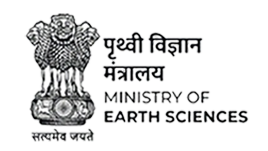









| Abstract Submission No. | ABS-06-0374 |
| Title of Abstract | Mechanisms and drivers controlling sea-surface pCO2 variability in the Northern and Southern Bay of Bengal |
| Authors | A.P. Joshi*, Kunal Chakraborty |
| Organisation | Indian National Centre for Ocean Information Services |
| Address | Purti Planets, Neptune block, Flat -1B, Dr. N.G. Shah Road Kolkata, West Begal, India Pincode: 700061 E-mail: ap.joshi-p@incois.gov.in |
| Country | India |
| Presentation | Oral |
| Abstract | The northern and southern (above and below 15°N) of the Bay of Bengal (N-BoB and S-BoB) exhibit contrasting physical and associated biogeochemical dynamics due to high freshwater influx from rivers, monsoon precipitation, deposition of aerosols from anthropogenic sources, etc. Therefore, we hypothesize that the seasonality and magnitude of the sea-surface partial pressure of Carbon Dioxide (pCO2) significantly differ in these regions. This study uses a regional, high-resolution coupled physical-biogeochemical model simulated outputs (2006-2017) to understand the mechanisms and drivers modulating the sea-surface pCO2 in N-BoB and S-BoB. The difference in the rate of increase of pCO2 (3.97 ľatm yr-1 for N-BoB and 3.88 ľatm yr-1 for S-BoB) is approximately 0.1 ľatm yr-1. Our analysis indicates that among the four primary drivers (SST (Sea Surface Temperature), FW (Freshwater), DIC (salinity normalized Dissolved Inorganic Carbon), and TA (salinity normalized Total Alkalinity)) controlling seasonality of sea-surface pCO2 in the ocean, SST is the main driver controlling pCO2 variability in both regions. SST primarily induces pCO2 anomalies in N-BoB and S-BoB, although DIC strongly counters it. The effect of TA is negligible in both regions, but the FW has a strong control on the pCO2 in the N-BoB during the post-monsoon seasons. The winter-monsoon (DJF) has the lowest pCO2 anomalies driven by the lowering of the SST in both regions. The strong stratification in the N-BoB inhibits mixing, which reduces the nutrient availability in the surface ocean and weakens the biological pump. The reduced biological influence results in higher pCO2 levels. However, the high retention time of fresher surface waters reduces pCO2 in the N-BoB. This study shows that the stratification reduces the pCO2 by approximately 10 ľatm in the N-BoB. The stratification has strong control in reducing sea-surface pCO2 in the N-BoB than the S-BoB. |
| Keywords | Bay of Bengal,sea-surface pCO2,ROMS,Stratification,Freshwater |
| For Awards | yes |